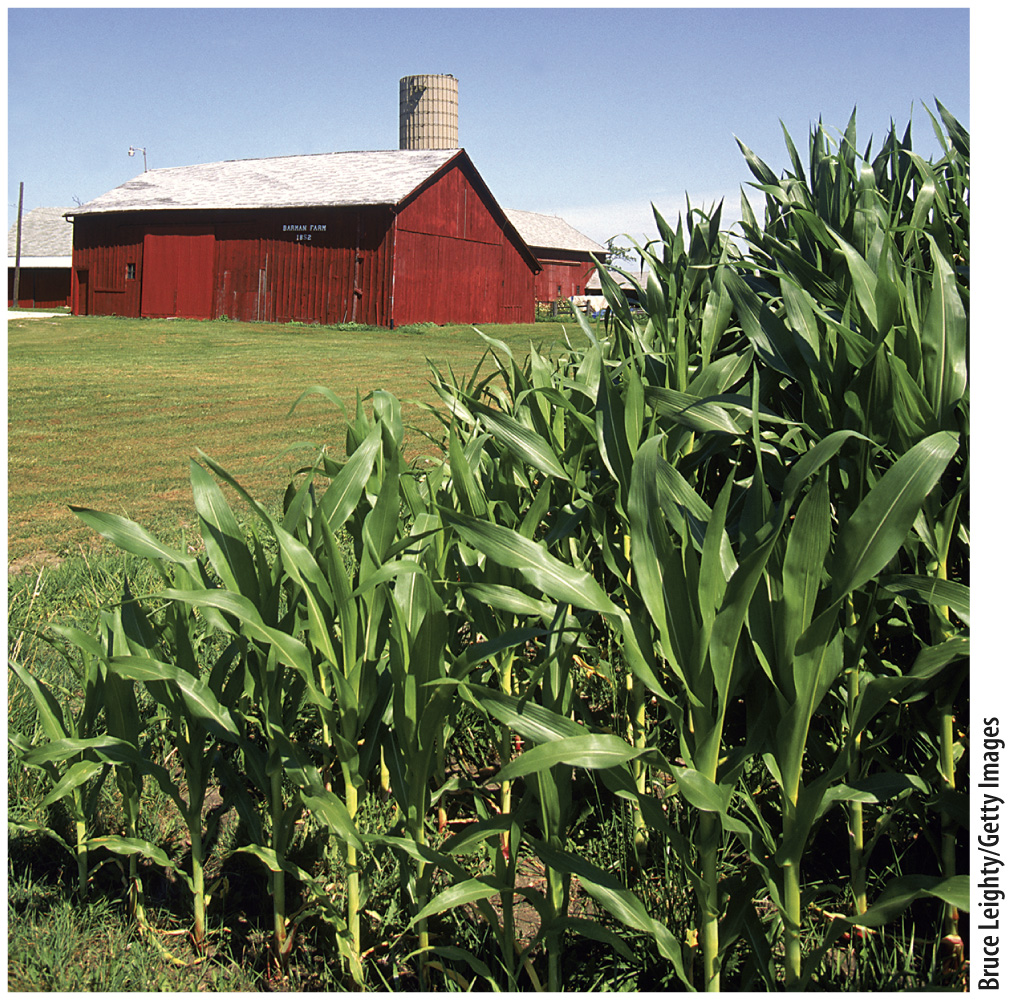Complex traits are affected by the environment.
Expression of complex traits is notoriously susceptible to lifestyle choices and other environmental factors. Inadequate nutrition is linked to slow growth rate and short stature in adults. Salt intake is associated with an increased likelihood of high blood pressure and is therefore an environmental risk factor for this common disorder. An environmental risk factor is a characteristic in a person’s surroundings that increases the likelihood of developing a particular disease. For example, a junk-
Environmental effects are also important in agriculture. Farmers are well aware that adequate nutrition is essential to normal growth of chicks, lambs, piglets, and calves, and that continued high-
Environmental factors not only affect the average phenotype for complex traits, but they also affect the variation in phenotype from one individual to the next. For example, most fields of corn you see planted along the roadside come from seeds that are genetically identical to one another, yet there is phenotypic variation in complex traits like plant height (Fig. 18.3). Because the plants are genetically identical, the differences in phenotype result from differences in the environment. Some parts of the field may receive more sunlight than others, and some parts may have better water drainage. No matter how uniform an environment may seem, there are always minor differences from one area to the next, and these differences can result in variation in complex traits. In the example in Fig. 18.3, the plants in the foreground are shorter than the others because that corner of the field has poorer drainage, and the plants growing there have to compete for nutrients with the grass growing nearby.

366
Environmental effects on complex traits in animals are evident in true-